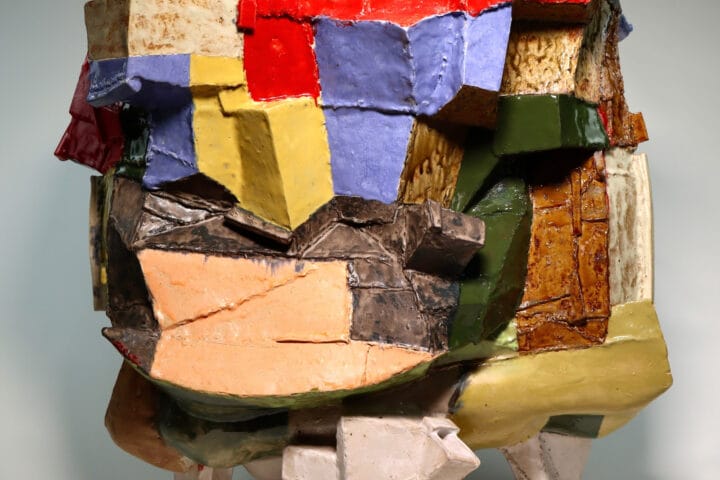This February, The Arts Club presents the first UK solo show from 99-year-old Egyptian painter Wassef Boutros-Ghali. With an artistic career spanning several decades, Boutros-Ghali’s work is defined by dazzling abstract compositions inspired by the colours of unrelenting sunlight. Architectural forms emerge, collide and reengineer themselves without narrative, conjured by subjects based on mythology, on nuanced observations of daily life and imagined vistas that relate to but could never work in real life. The exhibition presents works from 2000-2012: a reflective period for the artist by which time he had absorbed numerous architectural and modernist movements – notably colour field painting and geometric abstraction – alongside numerous socio-political events that had impacted his life to date.
Born 1924 in Cairo, Boutros–Ghali’s life and work have been shaped by political upheaval and military conflict, as well as his successful career as an architect. He comes from a political dynasty: his grandfather Boutros Ghali Pasha was Prime Minister of Egypt from 1908-1910, and his brother Boutros was General Secretary of the United Nations. As a young man, Boutros-Ghali’s first love was painting, but he was fervently discouraged by his parents from pursuing his passion, thus training as an architect at Cairo University, graduating first in his class. A self-proclaimed disciple of Le Corbusier, after WWII Boutros-Ghali spent time visiting Europe’s many Bauhaus and modernist buildings. At the age of 26, his first architectural project on the banks of the river Nile summoned an international modernist style – an exception for Egypt at the time. Amidst ongoing political strife in Egypt, he went on to expand his architectural practice in the region, also working as a technical consultant for UNESCO, meanwhile returning to his beloved painting in his spare time.
Following the Sudanese coup in 1969, Boutros-Ghali moved to New York, where he was immersed in the movements of colour field painting and geometric abstraction which dominated the city in the 1970s. Developing his own skills as a colourist, he honed a singular painterly language that drew on his many artistic and architectural influences but can be seen as uniquely his own. Eventually returning to Cairo in 1985, Boutros-Ghali’s eye for precision translates into vibrant flat forms which blend influences of Le Corbusier, Rothko, and Reinhardt. The artist explains: “My goal is simply to achieve an aesthetic visual equilibrium of geometric shapes and colours”.
At The Arts Club, six richly coloured paintings adorn the Ante Room. With an aversion to figuration – a lasting reaction to the cataclysmic years of upheaval and death during WWII – these works are characterised by a collision of primary and complimentary colours, with compositions reminiscent of distant landscapes. Boutros-Ghali’s artwork speaks to the pure and unrestricted physicality of painting. With minimalist tendencies, his paintings strive to say something with as little as possible; refusing to reference overtly recognisable forms and shapes. Harnessing colour to articulate motion and energy within the canvas, the artist’s nuanced geometric forms translate into dreamscapes which speak to an ‘alternative Modern’ that has defined his lifetime.
The exhibition is curated by Amelie von Wedel and Pernilla Holmes of Wedel Art, with special thanks to Leonie Mir and Lesley and Teymour Boutros-Ghali.
The Arts Club
40 Dover St, London W1S 4NP, United Kingdom












